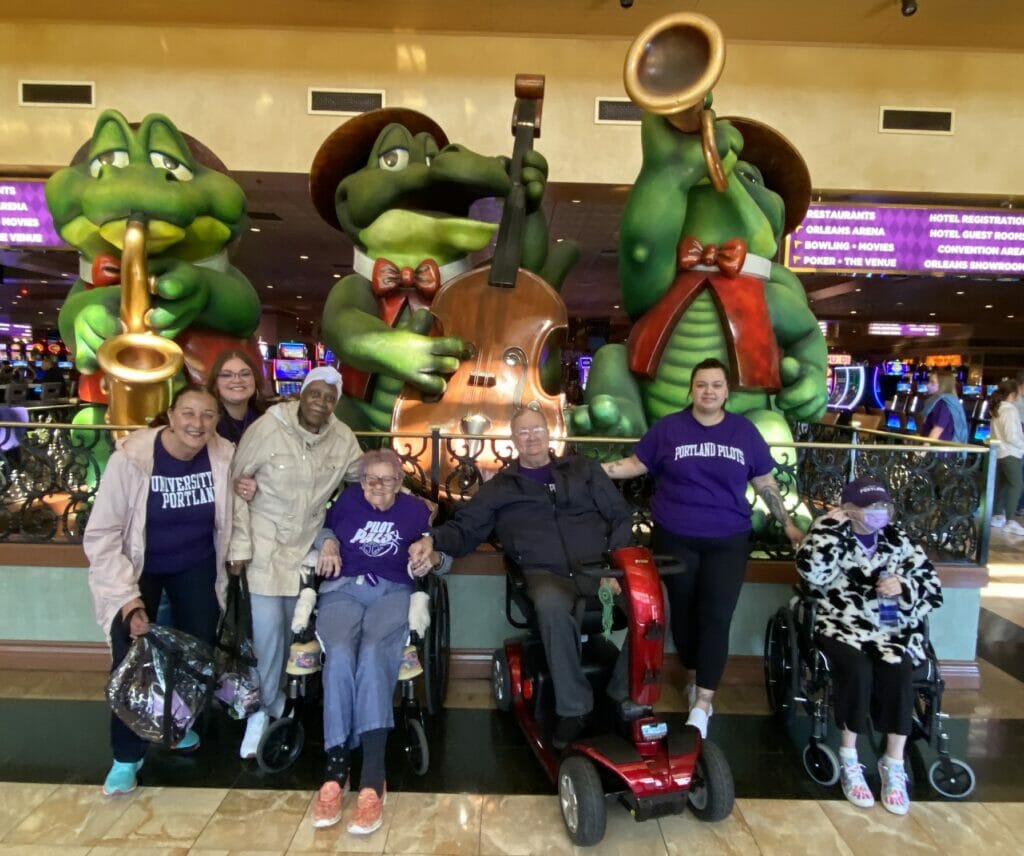
In a cruel twist of fate, I spent the past weekend in Las Vegas. Now, before I say more, I need to be clear: I love the people of Vegas, the long-term care facilities of Vegas, the long-term care staff serving the long-term care residents in the long-term care facilities of Vegas.
It’s just Vegas itself I don’t like so much.
And when I say Vegas, understand I’m not talking about the city in the entirety of its desert sprawl, or the assorted businesses, churches, schools, police and fire departments and family units represented therein. I’m referring just to that corridor of vacuous horrors called The Strip.
I was there with a group of five assisted living residents and their care staff, who had traveled to support the Portland Pilots women’s basketball team in their quest to win the WCC Championship, which they did. But that’s an exhilarating story for another day, and I’ll definitely be telling it sometime soon.
Today I need to talk about frogs — or rather, their absence.
While three of us walked through a casino to connect with the group before the final game, we received a cryptic, spy-sounding text to “meet us at the three frogs.” Not seeing anything that looked remotely green or amphibious, a brave colleague walked up to one of those cashiers locked behind a window, seeking guidance.
The conversation didn’t start promisingly. The woman looked up, glared and said, “Whaddya want?”
“Ummm, we were told to meet someone at three frogs? Can you tell me where those are?”
“We don’t have any frogs,” the cashier responded, clearly deeply offended at the notion. “Do we have any frogs?” she brayed to a colleague a few windows down, who shook his head. “Nope, no frogs,” she said with brusque finality, adding “Now go away” with her eyes. Which we did.

The search continued on our own, and the frogs turned out instead to be three large alligators playing musical instruments near the front entrance. Since both frogs and alligators are often green, it was an easy mistake to make. No harm done.
But the juxtaposition between watching long-term care staff treat their residents and everyone around them with absolute kindness, and the rude unhelpfulness of the “we don’t have any frogs” lady was breathtaking.
I wanted to walk back up to that window and explain the possible health benefits of kindness. Like lower levels of stress and blood pressure, better cardiovascular health, reduced anxiety and depression, or the research suggesting that kind people might even live longer. But I didn’t have the courage.
Maybe that cashier thinks her words don’t matter, because what happens in Vegas stays in Vegas. But kindness doesn’t work that way. It ripples, and so does unkindness.
Treating people poorly in long-term care quickly comes back to bite you. The patient you’re short with will tell a family member who will then be similarly rude in return, and/or tell your boss. The colleague you snap at will be someone whose help you’ll probably need in the next five minutes. Acts of unkindness have a magnifying effect in a closely-knit facility setting, and tend to make everyone think twice before gratifying the urge to be unpleasant.
“Be kind whenever possible. It is always possible,” said the Dalai Lama. That means treating everyone well, all the time. Whether you have frogs or not.
Things I Think is written by Gary Tetz, a two-time national Silver Medalist and three-time regional Gold and Silver Medal winner in the Association of Business Press Editors (ASBPE) awards program, as well as an Award of Excellence honoree in the APEX Awards. He’s been amusing, inspiring, informing and sometimes befuddling long-term care readers worldwide since the end of a previous century. He is a writer and video producer for Consonus Healthcare Services in Portland, OR.
The opinions expressed in McKnight’s Long-Term Care News guest submissions are the author’s and are not necessarily those of McKnight’s Long-Term Care News or its editors.




